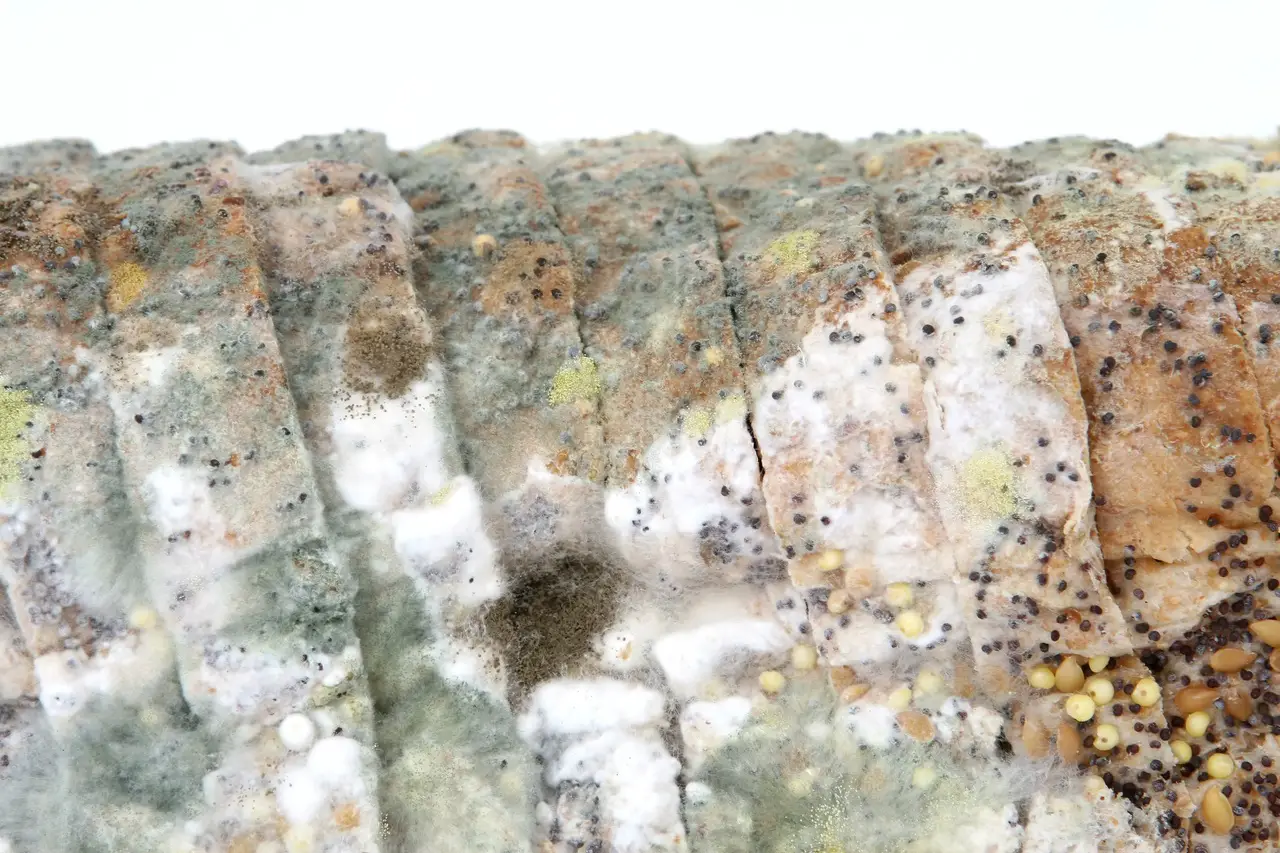Moldy food is compostable. Opt for moldy fruits and vegetables. In most cases, these are safe to compost. Avoid animal-based foods like eggs and dairy if there’s any mold on it.
If you enjoy composting and are wondering whether it is safe to combine moldy food with your compost, the answer is yes.
Keep reading below for more details on how to compost moldy vegetables.
Table of Contents
What Is Mold?
Mold is a type of fungus in the fungi kingdom. It reproduces through spores, which ies into the air.
Mold spores need food to grow, which explains why they commonly grow on food. It also grows on wood, carpets, and even paper.
What Types of Mold Are There?
1. Green mold
Cladosporium is the most common type of green mold. This type of mold is found mainly on spoilt bread or citrus fruit.
2. Pink mold
Pink mold grows on foods such as dairy products and meat. It’s also highly toxic and can cause gastrointestinal complications.
3. White mold
White mold is sometimes used for food preservation, although you should be cautious when dealing with it.
Many types of mold first turn white before they morph into other colors, like green and black.
What Moldy Food Is Compostable?
Moldy fruits and vegetables are compostable, including:
- Pineapple
- Watermelon
- Collard greens (kale)
- Tomatoes
- Bananas
There are different types of mold; the one that forms on bread and fruit and the one that grows on vegetables. However, some can be poisonous.
Poisonous mold produces mycotoxins, which can cause respiratory and digestive system complications.
Mycotoxins are found mostly in grain and nut products but can also grow in other foods like apples.
The most harmful type of mycotoxin is aflatoxin, which scientists have found to cause cancer.
Moldy Food to Avoid in Your Compost
Not all moldy foods are compostable, and animal-based foods like eggs and dairy are some of them.
More examples of uncompostable moldy foods include:
- Moldy meat
- Dairy products
- Fats and oils
- Paper
- Greasy or spicy food
- Bones
- Sweet or sugary foods
- Fish
The mold that grows on fruits and vegetables is completely different from the one that grows on animal-based products like eggs and dairy.
Moldy animal-based foods give off a bad smell that is often unbearable. They also upset the temperature and environmental balance and attract pests.
How Do You Compost Spoiled Food?
The best part about composting is you don’t need a lot of space for it to work. It’s also a great DIY project to keep you busy while reducing your carbon footprint.
First, you’ll need a few supplies:
- Wheelbarrow (for hauling around the material)
- Water
- Plenty of space
- Compost bin (optional)
- Shovel/pitchfork
Here’s how you can compost spoiled food:
1. Identify and Prepare a Good Location for the Composting Process
You can make your compost either into a heap or inside a compost bin.
Your best bet would be a backyard composting bin since it keeps away pests and holds in the moisture. You can build one or get one from your local grocery or hardware store.
The compost bins should be three feet wide and two to three feet deep. They should also have lids and holes in the sides for aeration. Lastly, the bottom should be open.
If you choose to make a heap, make sure it’s between three and five square feet—the bigger the pile, the better the insulation.
Larger compost has a bigger surface area, meaning more microorganisms for the decomposition process.
You’ll want to put your bin or heap where it will gets enough sunlight but not so much that it gets too hot.
2. Prep Your Materials and Build a Pile
Chop up the moldy foods and greens into small pieces and set them aside. Cutting them up speeds up the decomposing organic matter. Next, set down a layer of browns at the bottom.
This layer includes:
- Eggshells
- Branches
- Sawdust
- Wood chips
- Dryer lint
- Straw/hay
The brown layer helps with drainage and promotes air circulation. Each brown layer should be followed by grass or food scraps—the green materials regulate the amount of nitrogen while the brown materials add carbon to the compost.
The rule of thumb should be three layers of browns for every layer of greens. Bury the kitchen scraps at the center of your compost, where the temperatures are high.
Lastly, add topsoil to the top of the compost pile. Soil is rich in microbes, which speed up decomposition.
Garden soil also prevents pests that might be attracted by rotting kitchen waste from swarming over your compost heap.
3. Regular Turning
Remember to add water and mix evenly after every two layers to avoid bad smells. Use your shovel to turn the compost materials while frequently adding water; be sure to break up the materials into smaller bits.
Your compost should be ready once it has a rich earthy smell and looks dark and crumbly.
Frequently Asked Questions
1. Why Do I Have Flies?
It means the organic waste has been exposed to the air. The solution is to cover it with more brown material, such as wood chips and broken twigs.
2. Why Isn’t My Compost Heating Up?
It means there isn’t enough brown material, so you’ll need to add more layers of wood chips, hay, or eggshells. Remember not to add any more water.
3. Why Is There a Bad Odor?
It means there’s too much water or too little aeration. You can remedy the situation by adding more layers of brown material.
4. Why Isn’t My Compost Heating Up?
It means you don’t have enough green material or vegetable scraps, so be sure to add more. Alternatively, you can add more water between the layers.

